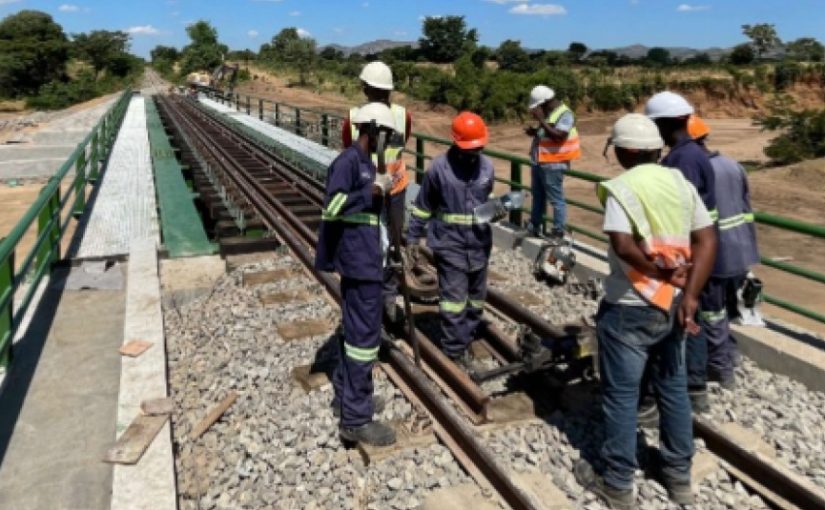Mozambique Tete Coal: The completion of a major rail rehabilitation project in Malawi, connecting the capital Lilongwe to Balaka in the southern part of the country, has paved the way for the resumption of Mozambique Tete coal exports.
This development is crucial for the region, as it reopens the trade route for both thermal and coking coal from the resource-rich Tete Province to Malawi.
The restored railway line is expected to boost trade and support local mining operations, which have been struggling due to environmental concerns and divestment by international investors. Despite these challenges, the global demand for affordable energy sources keeps Mozambique’s Tete coal in high demand.
Key Features of the Rail Link Rehabilitation
The successful rehabilitation of the Lilongwe-Balaka rail line is not only a win for Malawi’s infrastructure but also a significant step forward for Mozambique coal industry.
This vital connection enables smoother transportation of Mozambique’s Tete coal to Malawi, a market eager for more energy supplies. The project involved laying new tracks and reconstructing several old bridges, ensuring the railway can handle the demands of coal transport and other freight.
International mining companies like India’s Jindal and JSW Steel have seized the opportunity by acquiring mining rights in Mozambique’s Tete coal region. These companies have primarily been exporting coal to India, but with the reopening of the rail link, closer markets like Malawi are now within reach.
Addressing Environmental Challenges and Sustaining Coal Demand
The global shift toward renewable energy has put pressure on the coal industry, leading to a decline in demand from developed countries. As a result, many investors have withdrawn from coal projects in Mozambique Tete coal sector, citing environmental concerns. However, the demand for coal remains strong in developing nations, where industrial growth and energy needs still rely heavily on fossil fuels.
For countries like India and Malawi, coal remains a crucial energy source, and Mozambique Tete coal reserves continue to meet this demand.
Rail Infrastructure Revamp: Ensuring Long-Term Coal Transport
The upgraded rail line plays a key role in ensuring the steady flow of Mozambique Tete coal to its neighboring countries. The reconstruction of old infrastructure, including several bridges, has modernized the rail route, making it more reliable for large-scale coal exports.
The Malawian government has also expressed its commitment to expanding the rail network further, with plans to extend the line northward to Zambia and potentially the Democratic Republic of the Congo (DRC). This extension would open new markets for Mozambique Tete coal and facilitate broader regional trade.
Nacala Logistics: The Key Operator in Coal Transport
Nacala Logistics, which operates the rehabilitated rail line, is crucial in managing the transport of Mozambique Tete coal. The Lilongwe-Balaka link connects to the Nacala railway, a major transport corridor stretching from the Indian Ocean port of Nacala, through Malawi, and back into Mozambique.
This network services the Moatize coal mines in Tete, ensuring that coal from this rich region can reach both local and international markets efficiently.
Nacala Logistics aims to complete further rail rehabilitation between Lilongwe and Zambia by the end of the year, which would further enhance the ability to transport Mozambique Tete coal across borders.
This infrastructure is pivotal for Malawi, which plans to increase its coal-fired power generation capacity in the near future. As the country grows its energy needs, the demand for reliable coal imports from Mozambique is expected to rise.
Economic Impact of Tete Coal on Malawi
The restored rail link has far-reaching economic implications for Malawi. For the landlocked country, Mozambique’s Tete coal represents a vital source of energy for both industrial use and power generation.
While Malawi’s current coal-fired power generation is limited, it has ambitious plans to expand its capacity, which will increase the demand for imported coal from Mozambique. The coal transported via the newly upgraded rail line will play an essential role in meeting these energy needs.
Additionally, the potential extension of the rail line to Zambia and the DRC will create broader trade opportunities. This could make Mozambique’s Tete coal even more valuable, as it opens new markets in the Southern African region. The economic ripple effect of this rail link upgrade could be significant, benefiting not only Malawi but also Mozambique and other neighbouring countries.
Conclusion: Mozambique Tete Coal Exports Set for Growth
The rehabilitation of the Lilongwe-Balaka railway has given a much-needed boost to the coal trade between Mozambique and Malawi. With Mozambique Tete coal reserves finding new markets and the rail infrastructure now fully functional, coal exports are set to increase. International companies like Jindal and JSW Steel are well-positioned to benefit from these improvements, with prospects for both Indian and regional markets looking promising.
As the rail link extends into Zambia and potentially the DRC, the opportunities for Mozambique’s Tete coal will expand further, offering a vital energy source for developing countries. This infrastructure upgrade is not only a win for Mozambique’s coal industry but also a step forward for regional trade and economic growth.







